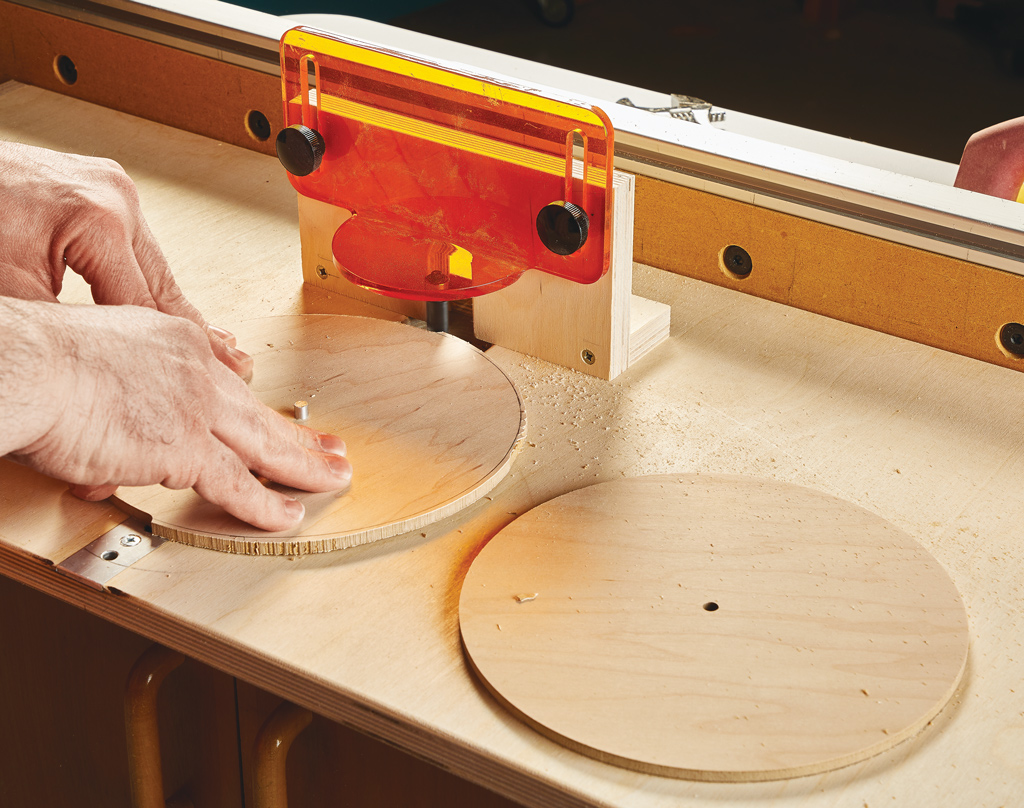
There's a common misconception that a planer will flatten the stock you run through it. What a planer actually does is reduce the thickness of a workpiece and make one face parallel to the other. But to end up with a flat workpiece, you have to flatten one face first.
Unless you have a very wide jointer, flattening the surface can be a problem. You could break out the hand planes and get to work, but that can make for a long day if the workpiece is twisted. My favorite way to tackle this problem is with a router and a shop-made jig.

THE JIG. This technique begins by mounting the workpiece in a stable platform that will prevent it from moving or rocking. Add to that platform a set of rails slightly taller than the thickness of the workpiece and you've established a reference surface you can use to flatten the face. The drawings show you how to make the base and rails that form the basic jig.
You'll notice that the front rail of the jig is fixed and the back rail is adjustable. This arrangement allows you to secure stock of different widths in the jig simply by moving the back rail against the edges of the workpiece. Shop-made wedges "pinch" it between the rails and hold it fast while you rout the face.
To span the distance between the rails, mount your router on a large auxiliary base. The drawings above show the plans for building the router base. One important detail to take note of is the pair of stops on the underside of the base. By adjusting the position of the stops to limit the travel of the router, you prevent the bit from damaging the rails.

As I mentioned earlier, I use simple shop-made wedges to secure the workpiece between the rails. By placing additional wedges under the spots where the stock is not in contact with the jig's base, you keep it stable while routing. If necessary, a small piece of doublesided tape can be used to hold the wedges in place under the workpiece. With the workpiece secured between the rails, you can flatten it by routing away the high spots. You can see how the base and jig work together in the main photo.

ROUTER BITS This technique depends on a router bit with a flat bottom. That means you can use most straight bits. However, my preference is to use a bottom-cleaning bit designed for this purpose. These bits come in different diameters, but the smaller ones will require many more passes over the stock to flatten the surface. That's why I use the 1 1/2"-dia. bit shown in the photo. It has an up-shear design that cuts cleanly in just about any material.

TECHNIQUE. Once you've set up the jig and installed the correct bit, all you need to do is move the router back and forth across the grain to flatten the stock. The key is to take overlapping passes and work your way over the surface along the entire length of the workpiece. I find it helpful to mark the surface with a pencil to show my progress.

I also limit the depth of cut to around 1/8" for smooth, tearout-free cutting. You may need to make several passes to flatten the workpiece. This is easy to do with most plunge routers simply by adjusting the turret on the depth stop.

After surfacing one face, you can run the opposite face through the planer and you'll have a flat workpiece with parallel faces, as shown in the box below.
Once you get the hang of it, using the jig is a breeze. And starting with a flat, reference face translates to reliably square project parts.
Shop Tip: Pencil Marks













